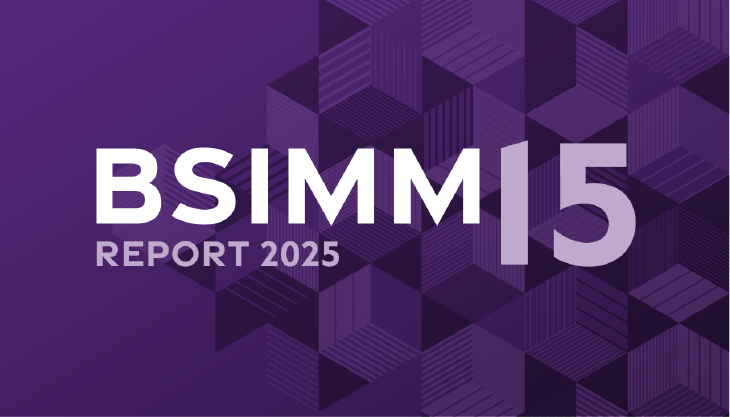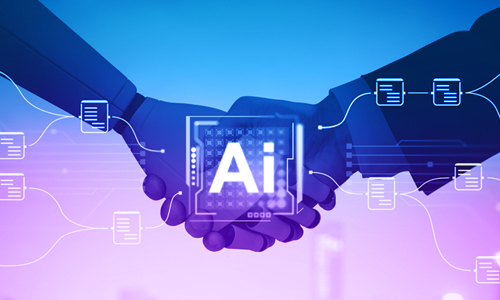Subscribe
In the ever-evolving landscape of software development, artificial intelligence (AI) is emerging as a transformative force, reshaping the software development lifecycle. While AI use is still not without risk, it's time to reframe the conversation and explore how AI can enhance and streamline various stages of the SDLC. Let’s take a look at how you can strategically incorporate AI in the SDLC and address lingering concerns.
What is AI?
The building block of AI is deep learning, which is computers replicating specific brain regions or neurons to mimic how the brain works to do useful tasks. Artificial intelligence is software that has been trained instead of programmed. Training in this context mean going through a machine learning (ML) process that involves tuning the neural network that the AI runs on to provide an expected response to specially selected inputs. The most common method of training involves processing enormous amounts of data, fine-tuning the neural network, and then building an internal rule system that can be applied to decision-making or content generation.
While early AI applications were simple due to hardware, training data, and time constraints, modern AI systems take advantage of the latest silicon architectures and computing technologies. Over time, the landscape of AI has evolved dramatically, with modern AI demonstrating increased complexity, capability, and versatility far beyond the basic tasks that AI would demonstrate in university labs.
The advent of commonly available, powerful AI has found applications in various fields, from facial recognition to decision inputs, while generative AI, exemplified by models like ChatGPT, has taken on tasks like content creation. These ongoing advancements underscore the imperative for security professionals to comprehend these technologies, their risks, and potential solutions, as the applications of AI continue to expand exponentially.
The modern SDLC
Traditionally, software development begins with a business need and then progresses through stages including requirements, design, development, integration, and delivery. The artifacts generated at each phase, such as code, test cases, and releases, require validation and security checks to ensure that they are minimizing software risk. In the modern SDLC, these artifacts traverse multiple processes as they are guided and evaluated by humans, but there are new opportunities for AI to play a crucial role in SDLC decision-making and development.
AI in the SDLC
To effectively incorporate AI into the SDLC, it is crucial to comprehend the various roles it can play. The roles of AI in the SDLC can be broadly categorized into four primary functions.
- Copilot AI tooling functions as a contributor in the development process. It is capable of writing code, constructing scripts, generating media assets, and offering contextual guidance to developers. With its unique perspective, AI can serve as an integral part of the development team, contributing actively to the creation of software.
- AI-powered security testing can function as an evaluator by employing trained machine learning algorithms. These algorithms evaluate the qualities of software artifacts, identify issues, recognize functionality, and make informed decisions. Predictive AI holds the potential to assume gating functions in the future, further streamlining the evaluation process.
- AI could function as a supervisor or gatekeeper. AI could supervise the entire software development process, ensuring that the generated artifacts meet the necessary criteria and are devoid of issues. It is essential, however, for humans to oversee AI decisions and provide additional context as needed, ensuring a harmonious collaboration between AI and human expertise.
- AI could function as a problem-solver and fixer by combining its contributor and evaluator roles. It could propose solutions for identified issues, leading to the development of self-healing software. This could create a continuous loop of issue identification, solution proposal, and verification, ultimately enhancing the efficiency and robustness of the software development process.
Concerns to consider
Integrating AI into the SDLC brings legitimate concerns, encompassing issues of intellectual property (IP) protection, cybersecurity, and ethical considerations. To facilitate a seamless integration, several key considerations should be taken into account.
First, in terms of IP protection, it is imperative to treat AI itself as a valuable asset. AI system owners and developers should employ traditional IP protection mechanisms to safeguard AI innovations. Additionally, they should ensure the security of training data and carefully assess the implications of storing sensitive information offsite.
When integrating AI developed code, requirements, test cases, and other artifacts into developed software, recognize the relative naivety of AI and exercise caution when incorporating its contributions. Implement robust supervision protocols to guarantee that the generated code aligns with stringent security and quality standards.
When addressing data security concerns, especially in the context of cloud-based AI, prioritize secure data transfer methods and be aware of the shared responsibility model. Even if AI operates on premises, continuous supervision is essential to ensure sound decision-making and adherence to security protocols.
As AI continues to reshape the landscape of software development, understanding its roles and addressing concerns is crucial for a successful integration into the SDLC. Embrace the transformative potential of AI while safeguarding your intellectual property, ensuring code quality, and navigating ethical considerations. By strategically incorporating AI, organizations can enhance efficiency, automate decision-making, and stay ahead in the ever-evolving field of software development.







